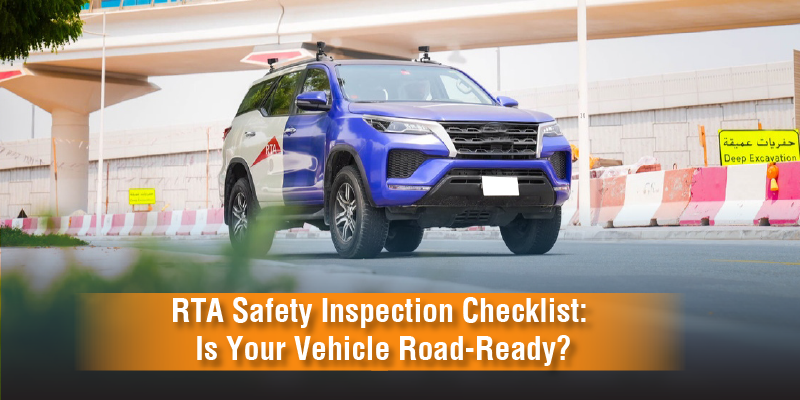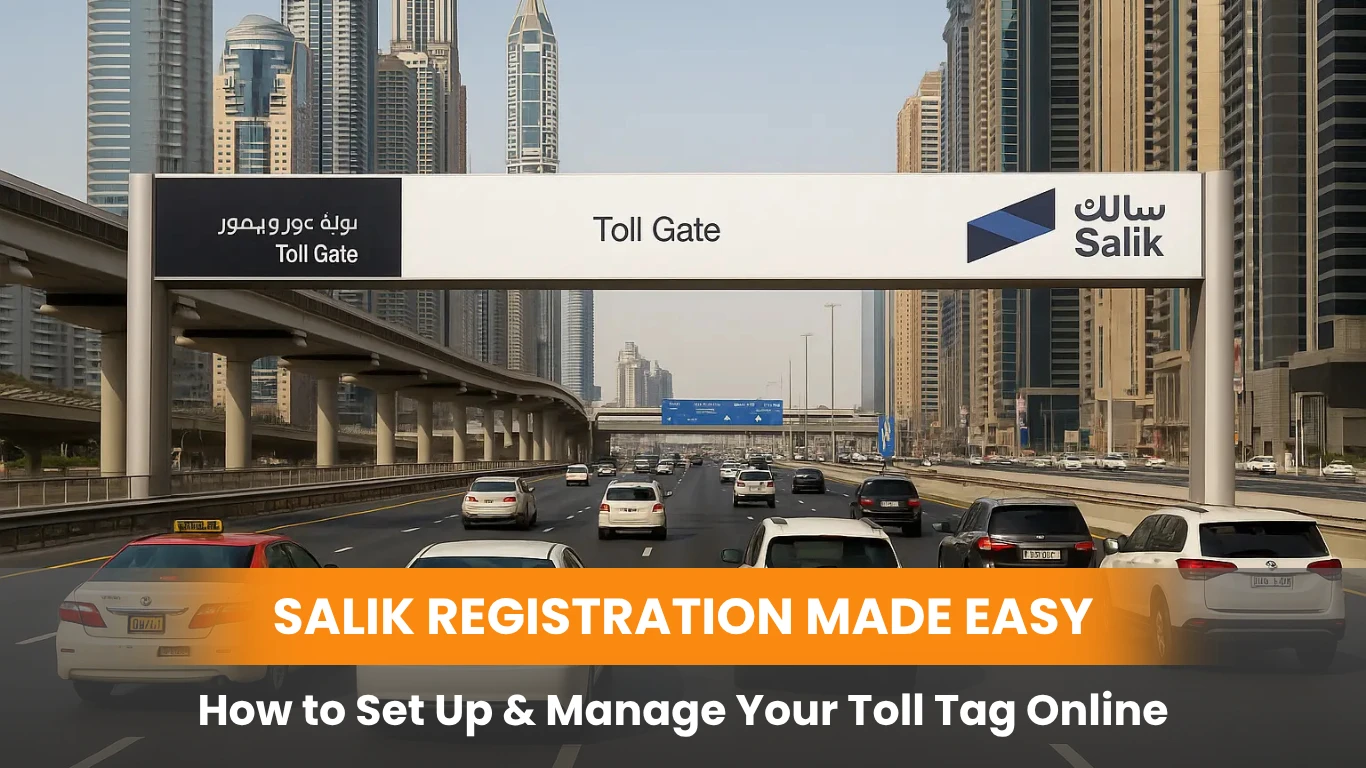When you’re putting your vehicle through the wringer on Dubai’s fast lanes or cruising across the emirates, you don’t just need a ride — you need confidence. That’s where the importance of a Roads and Transport Authority (RTA) safety inspection comes in. Ensuring your vehicle is truly road-ready means staying ahead of potential breakdowns, avoiding fines, and passing your inspection without sweat. At our workshop (with 15 + years of experience servicing luxury and premium cars across the GCC), we’ve seen how small oversights can turn a routine check into a costly repeat visit. So let’s walk through your ultimate car inspection checklist so you meet the RTA vehicle inspection requirements, breeze through the Dubai RTA vehicle test, and drive with peace of mind.
Why vehicle road readiness matters
Whether you’re heading into a regular service or prepping for the road worthiness test Dubai process, vehicle road-readiness is more than just a box ticking exercise. According to industry reports, mechanical failures remain a major contributor to breakdowns and roadside emergencies.
By adhering to a disciplined car safety checklist UAE, you preserve performance, protect resale value, reduce risk, and meet the rigorous standards at RTA car testing centres. In short: your car, your safety, your reputation — all tied to readiness.
Key items on your RTA safety inspection checklist

Here are the main elements you should inspect — ideally monthly, and definitely ahead of your formal RTA test.
1.Tyres: the essential foundation
Your tires are your only physical link to the road. If they’re compromised, everything else can suffer.
- Check tread depth for wear, sidewall cracks, bulges or embedded foreign objects.
- Verify correct tyre pressure (including spare) — under-inflation affects braking and stability; over-inflation decreases grip.
- Inspect for uneven wear: this may signal alignment or suspension issues, which will likely be flagged by the RTA inspection.
These steps are key to passing the tyre portion of your RTA test and ensuring your car meets road-worthiness test Dubai criteria.
2. Lights, indicators and visibility devices
Lighting and visibility aren’t just about aesthetics — they’re safety critical and RTA-checked.
- Test all headlights (low/high beam), fog lights (if fitted), indicators, brake lights, reverse lights and hazard lamps.
- Check for damaged lenses, moisture inside units, and headlight alignment (especially important in bright UAE conditions).
- Wipers and washer fluid: Inspect blades for wear, check windshield for chips/cracks (which can cause immediate inspection failure).
Proper lighting and clear visibility devices are essential items in the car inspection checklist you’ll use to ensure vehicle road readiness.
3. Brakes, steering and suspension
If tyres lay the foundation, brakes and suspension ensure you stay safe and in control.
- Brake pads, discs and fluid levels: look for signs of wear, soft pedal feel, pulling to one side, or strange noises.
- Steering: Any looseness, play or abnormal noise should be checked.
- Suspension: Worn shocks, leaking struts or sagging ride height can hamper handling and will be noted in the formal inspection at RTA car testing centres.
Keeping this system in prime condition is one of the most important parts of your RTA vehicle inspection requirements.
4. Engine & fluid checks
While many drivers focus on aesthetics, the engine and fluids are core to road-ready performance.
- Check engine oil level and quality; dark, thick oil may signal overdue change.
- Check coolant, brake fluid and battery health. Corrosion at terminals or old batteries are common causes of inspection failure.
- Look for visible leaks under the car; damp spots may indicate problems before they result in breakdowns.
These checks help your vehicle stay compliant, reliable and aligned with RTA’s expectation of road-worthy vehicles.
5. Documents, mirrors, horn and general safety features
Often overlooked but critical: the routine things that tend to cause “fail” results if neglected.
- Documents: Registration, insurance and any emissions or service certificates must be current. The RTA may reject a vehicle for missing/incomplete paperwork.
- Mirrors: Side and rear-view mirrors must be intact, clean and correctly positioned.
- Horn: Fully functional – this basic device is often used in urban driving and marked on inspection lists.
- Seat-belts, airbags, dashboard warnings: Ensure no warning lights are on and occupant protection systems are functional.
This portion of the car inspection checklist may seem simple — but in the context of “pass RTA inspection” it holds real weight.
Pre-inspection preparation for the Dubai RTA vehicle test
When you take your vehicle to one of the RTA car testing centres, a little preparation goes a long way. Here are some tips:
- Book your slot early and arrive with a clean, well-presented vehicle — inspectors appreciate neatness.
- Run your personal checklist (above) at least 1–2 days before to remedy any issues.
- Ensure service history is available (especially for luxury/premium cars) — this supports your credibility.
- Ask your workshop to perform alignment/tyre pressure checks and top up fluids if needed.
- If there were previous failed components, retain receipts for evidence of repair and replacement.
A well-prepared vehicle improves the likelihood you will pass RTA inspection for the first time and avoid repeat fees/visits.
Why regular vehicle maintenance tips UAE matter
Beyond the inspection itself, habitually caring for your vehicle ensures long-term cost savings and durability. According to one source, preventative car maintenance catches issues early, increases fuel efficiency and enhances driving safety.
In the UAE’s climate — high heat, sandy conditions, and frequent long drives — regular attention to tyres, fluids, filters and under-carriage protection is even more critical. A vehicle that’s road-ready today remains efficient and reliable tomorrow.
FAQs
The RTA safety inspection evaluates the vehicle’s mechanical condition (tyres, brakes, suspension, steering), lighting & visibility systems, emissions (where applicable), and documentation to confirm the vehicle is road-worthy and meets UAE standards.
In the UAE, private vehicles typically require periodic inspection according to the licensing regulations. For example, a vehicle may not require inspection if it is new and within the first period post-registration. Additionally, it’s wise to run your own monthly vehicle inspection checklist to stay ahead.
Common fail causes include: worn tyres with insufficient tread or damage, non-functional lights or indicators, brake or suspension issues, cracked windshields, expired documents, and obviously major mechanical defects.
You absolutely should run your own pre-inspection checks (tyres, lights, fluids, mirrors, documents) using the car inspection checklist above. For premium or luxury vehicles (especially those serviced by a specialist workshop), relying on a professional technician ensures that alignment, brake pad thickness, electronics and suspension systems are all optimised — and that you’re more likely to pass first time.
Regular maintenance keeps your vehicle in good condition — healthy tyres, correct tyre pressure, functioning lights, fresh fluids, good brakes — all of which align directly with the RTA inspection criteria. By staying on top of maintenance rather than waiting for signs of failure, you greatly improve your chance of passing the inspection smoothly, while extending your vehicle’s lifespan and stability.
Final word:- Drive Smart, Stay Safe, and Keep Your Vehicle Road-Ready
Passing the RTA safety inspection isn’t just about ticking off boxes on a car inspection checklist — it’s about embracing a culture of safety, responsibility, and care for your vehicle. In a fast-paced city like Dubai, where every journey counts, maintaining vehicle road readiness ensures not only compliance with RTA vehicle inspection requirements but also your peace of mind on every drive.
From regular maintenance to timely repairs, each small effort brings you one step closer to a smoother, safer, and more confident driving experience. Whether you’re heading to one of the RTA car testing centers for your Dubai RTA vehicle test or simply performing your own inspection at home, following these steps can help you pass RTA inspection effortlessly and keep your car performing at its best aligning with vehicle maintenance tips UAE, and using the expertise of a reliable service centre (especially for premium & luxury cars), you set your vehicle up for success — and yourself for safer, smarter driving.
Remember — a safe car isn’t just a well-maintained machine; it’s a reflection of a smart driver who values safety and reliability. Keep this car safety checklist UAE close, stay consistent with your vehicle maintenance tips UAE, and you’ll always be ready for the roadworthiness test Dubai — today, tomorrow, and for many journeys ahead.
Because when it comes to your car, being prepared isn’t optional — it’s the road to safety and confidence.
Make your vehicle not just compliant, but confident. Drive with assurance that you’re road-ready and protected at Miss Auto UAE.







